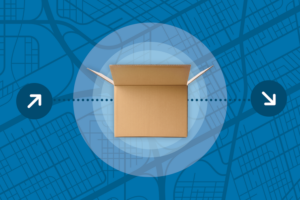When little shipments don’t fill up a whole truck, it’s known as less-than-truckload (LTL) transportation. Items from multiple shippers are piled into one vehicle and transported to several locations. This approach saves money because shippers just pay for the area their products occupy—not the whole truck.
LTL freight shipping is excellent for businesses with less cargo, allowing them to split shipping expenses with other companies moving on the same route. Companies wishing to save transportation expenses and guarantee the timely delivery of their goods can make this wise decision.
Mastering LTL freight pickup is crucial for shipping success. Using modern technology and tools, companies can simplify processes and offer excellent service, enhancing efficiency and customer satisfaction.
The improvement of the LTL freight pickup procedure will be the main goal of this manual. We’ll examine how to accomplish this most effectively using various approaches, instruments, and tactics. Let’s enhance your logistics work and improve LTL freight pickups.
COMMON CHALLENGES IN LTL FREIGHT PICKUP

Here are the most common challenges that you may encounter during your LTL shipping journey:
Addressing Capacity Issues in LTL Shipping
Selecting the right freight class will impact your costs and carrier selection for affordable LTL shipments. It’s critical to improve at determining freight class because mistakes are common.
Here’s how to do it:
- Consult Masters: To ensure you receive the greatest guidance, work with seasoned experts recognized for getting freight class right.
- Find Out More: Examine the freight class structure in detail and use the best sources available.
- Use Internet Resources: Use online resources that, given the specifics of your goods, assist you in determining the appropriate freight class.
Making Freight Grouping Better
When we don’t group freight well, it can lead to bad routes, poor load plans, and insufficient use of trailer space. Here are key ways to make freight grouping better:
- Better Load Plans: Use the latest tech tools to review shipment info and find the best ways to group items.
- Talk More with Carriers: Maintain an open and regular chat with carriers to plan and improve their grouping, ensuring they fill trailers well.
- Join Sharing Groups: Joining shipping groups can help make grouping freight smoother and more efficient.
Managing Price and Cost in LTL Shipping
LTL transportation requires careful cost and price management because of several influencing factors, including weight, size, distance, and additional accessorial expenses. Many calculated steps make for a proactive strategy.
First of all, better terms might result from carrier pricing negotiations that include the frequency and volume of your shipments. Utilizing technology to compare prices from various vendors can help you save money. Another clever tip to cut costs is to review your shipping methods and ensure that items are packed securely. These simple strategies can result in significant savings in the long run. These methods help businesses cut down on their LTL shipping bills.
Navigating Compliance and Regulatory Demands in LTL Shipping
Doing well when sending small loads mostly means sticking to the rules. Not doing this can lead to fines, hold-ups, and a bad look for your business. If your company sends goods like this, knowing all the must-follow rules is key. It’s also vital to ensure all forms, like lists of what you’re sending and papers for crossing borders, are filled out right and in full.
uShip is here to assist you in navigating the convoluted world of shipping. Our staff of LTL experts is here to help you identify the finest shipping choices. Contact us today to begin a seamless shipping experience.
TIPS FOR STREAMLINING LTL FREIGHT PICKUP
Everyone understands that being efficient is crucial for improving LTL freight pickup. Picture yourself skillfully handling LTL shipments while coordinating schedules. Think of it like a chaotic orchestra where the conductor somehow manages to hold a coffee spill mid-performance. Don’t stress. Here are some tips that will make your LTL freight pickups run smoothly.
Utilizing Technology
Select a carrier that uses cutting-edge, custom freight management software. These technologies can schedule pickups automatically, give real-time tracking updates, and provide insightful data to support your choices.
To make the most of your experience, it would be best to schedule LTL freight pickups on easy-to-use online freight marketplaces like uShip. Our access to a network of carriers enables companies to locate the best possible pickup choices at the most affordable prices.
Optimizing Packaging and Labeling
If you want to save handling time and guarantee effective loading and unloading procedures:
- Standardize the size and materials used for packing across shipments.
- Use clear and accurate labels to quickly and precisely identify items during pickup, transportation, and delivery.
- Add information like item descriptions, handling instructions, and shipper and consignee information.
Effective Communication
Communicate with truck drivers and carriers about pickup details, special requirements, and possible updates. You can use tools such as email, phone calls, or shipping apps to keep communication lines open and ensure everyone is on the same page.
Use tracking tools to monitor your shipment’s whereabouts in real-time. This will enable you to stay informed, inform others about the delivery status, and promptly address any delays or issues. Keep a close watch on your cargo to ensure smooth transportation and delivery.
Consolidation and Coordination
Group many shipments into fewer collections whenever possible to cut down on needed trips. Combining orders makes for better route planning for carriers, drops shipping costs, and makes things run smoother overall. Also, line up collection times with carriers to ensure the timing best suits your work needs and keeps wait times short. Plan for collections during times when it’s not busy to stay away from jams and hold-ups.
THE BENEFITS OF OPTIMIZING LTL FREIGHT PICKUP
If you’ve never shipped before, you may be wondering why there’s so much hype about LTL freight pickup optimization. Let’s simplify it so you can see its value and how it might help you and your company.
1. Cost Savings
LTL freight pickup optimization can result in cost savings. When you combine several small shipments into one, packages require fewer journeys. Splitting the costs with others translates into cheaper transportation charges. Another benefit of effective scheduling is reducing expensive rush shipments.
2. Time Efficiency
Time is valuable, especially in business. Save time by making LTL freight pickup more efficient. Make sure carriers are connected seamlessly and use automated scheduling systems to ensure timely pickups and deliveries. Happy customers and smoother operations will be the result.
3. Improved Accuracy
Standardized packaging and clear labeling not only facilitate carriers’ handling of your cargo but also lower the possibility of error. Precise labeling guarantees that your products can be correctly identified and arrive at their destination promptly.
4. Enhanced Visibility
Tracking technologies enable you to monitor your shipments at every stage. Real-time updates provide you peace of mind and the capacity to quickly resolve any problems by allowing you to track the location and condition of your products.
5. Environmental Benefits
Not only does your business line benefit from optimizing LTL freight pickup, but so does the environment. By batch shipments and effective routing, you may reduce the number of trucks on the road, reducing carbon emissions and your environmental impact.
HOW TO GET STARTED
Knowing the benefits, you may be curious about how to make the most of LTL freight pickup for your company. To get you going, follow these easy steps:
- Invest in Technology: Consider using freight management software and online platforms like uShip to streamline scheduling and communication.
- Standardize Packaging: Use consistent packaging materials and clear labeling to improve handling and accuracy.
- Communicate Effectively: Establish clear communication channels with carriers and utilize tracking tools for better visibility.
- Coordinate Shipments: Batch pickups and coordinate schedules with carriers to minimize trips and maximize efficiency.
Conclusion
Businesses can truly thrive by streamlining the process of picking up smaller loads of goods. Imagine the incredible amount of time and money saved through the smart use of technology, making sure packages are all uniform in size, talking clearly and directly, and getting shipments in perfect order.
By mapping out pickups with a keen eye and lumping deliveries together as tightly as possible, companies can slash the high costs tied to moving goods. Please think of customers’ deep joy and satisfaction when their items arrive exactly when expected, thanks to sophisticated systems that plan without error and keep conversations clear and open.
Turning the gears of LTL freight pickup to run smoother sharpens how clearly you can see and track these journeys and sharply cuts down the errors that can trip you up. This means you can keep a closer eye on your shipments. By mapping routes smarter and reducing the number of trucks rolling out, you’re also helping our beautiful planet by lowering the nasty fumes vehicles puff out into the air.
When you pause and look at the big picture, adopting these strategies is like hitting the jackpot for companies looking to beef up their profits, slash unnecessary spending, spark more joy in their customers, and take a stand for the health of our world. Everyone involved stands to win big from this game-changing approach.
Think of the tremendous positivity and ripple effects of such actions—it’s a heartwarming thought that by making these smart moves, companies aren’t just boosting their bottom lines; they’re lighting up the world, making it a brighter place for all who dwell in it.

QUESTIONS PEOPLE ALSO ASK (PAA)
How can I reduce LTL freight costs?
Cutting LTL freight expenses means packing trucks full, haggling for better rates, and using regular packaging to avoid fees. Tech tools can help compare prices and plan cost-effective routes. Let’s save money on shipping!
What technologies can streamline LTL freight pickups?
Use freight software to schedule and monitor pickups, check out websites like uShip to pick carriers, and have tracking tools for shipment updates. These tools speed up pickups and make things go more smoothly, saving time and making everything run better.
How do I schedule an LTL freight pickup?
To set up an LTL freight pickup, contact the carrier with all the shipment information, decide on a pickup time, and confirm everything in writing. Good communication helps pickups happen on time and without issues, making the process more efficient and dependable. Make sure to double-check the details to avoid any delays or mix-ups. And remember, a well-organized pickup means a smoother shipping experience overall. Don’t hesitate to contact the carrier for any questions or concerns. Let’s make this pickup a breeze!
What are the best practices for labeling LTL shipments?
When labeling shipments, ensure the labels are clear with the sender and receiver info. Attach them tightly so they don’t fall off during transit. Use the same labeling methods every time to avoid confusion. Good labeling helps identify and handle shipments easily, reducing mistakes and delays. It’s crucial to ensure your packages arrive safely and on time. So, pay attention to detail and take the time to label your shipments properly. Your effort will be worth it in the end, as it can save you from headaches and frustrations down the line.
How does communication impact LTL pickup efficiency?
Communication plays a big role in how efficient LTL pickups are. By keeping in touch with carriers and sharing any special requests or updates, you can solve problems quickly and make sure things run smoothly. Good communication makes the whole shipping experience better and more efficient.



